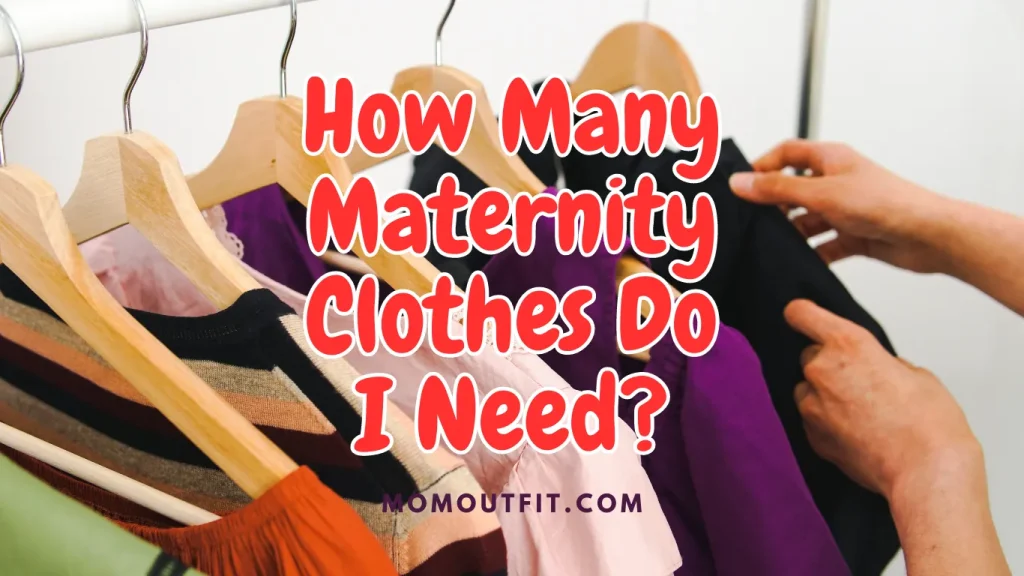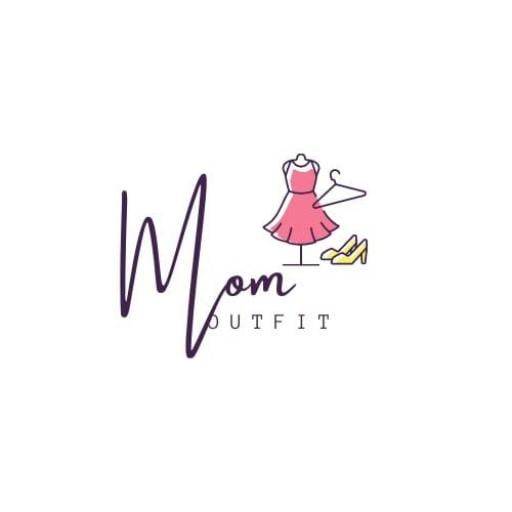Hello there! Are you going to be a mom soon? That’s great news! You might be wondering about a lot of things right now. One of those things might be about clothes. Yes, maternity clothes! You might wonder, “How many maternity clothes do I need?” Don’t worry, I am here to help you with that.
You’ll need a few tops, bottoms, and dresses. Maybe around 5-7 tops, 3-5 bottoms, and 2-3 dresses. Also, don’t forget about undergarments. You might need 2-3 maternity bras and some underwear. If it’s cold, one maternity coat should be enough.
So, that’s it! Not too many, right? But remember, every mom-to-be is different. So, choose what feels right for you.
So, maternity clothes are unique clothes made for moms-to-be. They are comfy and stretchy. Also, they give your growing belly room to breathe. But how many of these clothes do you need? Well, it’s not a big number. You don’t need a whole new closet!

Understanding Maternity Clothing
Maternity clothing has come a long way from the days of billowing dresses and maternity corsets to conceal a woman’s baby bump. Today, expectant mothers have many options to accommodate their growing bellies and maintain their style.
In the Middle Ages, women’s everyday dresses were typically full and forgiving enough to double as maternity wear readily. It wasn’t until the early 14th century that silhouettes started to follow the female form more (source).
In the 21st century, maternity fashion has evolved to embrace second-skin fabrics and showing skin—especially the bump. From cropped tops to sheer fabrics to bodysuits, it’s all about wearing what you like—what makes you “you”—during pregnancy and beyond (source).
Today, maternity clothes are designed to be both stylish and comfortable. Brands like Lululemon, Storq, and Beyond Yoga offer maternity leggings that are stretchy enough to work from your first trimester to your third, and are breathable and moisture-wicking. Jeans brands like Joe’s Jeans, Madewell, and Abercrombie & Fitch offer maternity jeans that are stylish, comfortable, and adaptable to your changing body (source).
In addition to comfort and style, modern maternity clothes are designed with practicality. Many pieces are designed to be worn both while you’re pregnant and after you’ve given birth, with features like clip-down straps for nursing mothers and flowy silhouettes that flatter your bump and will still look stylish post-baby (source).




Click on any image to buy them or click here
Factors Influencing the Quantity of Maternity Clothes
Every woman’s pregnancy journey is unique. The quantity of maternity clothing can vary based on individual preferences and circumstances. Let’s explore key factors influencing the quantity of maternity clothes you need.
- Body Changes: Your belly grows, and you may experience weight gain and swelling in different areas. These changes will impact the fitness and comfort of your regular clothes. The extent of your body changes will determine the quantity of maternity clothes.
- Duration of Pregnancy: The duration of pregnancy is the primary factor influencing the quantity of maternity clothes. A full-term pregnancy lasts approximately 40 weeks. But noticeable body changes start to occur around the 20th week. Thus, maternity clothes are typically needed for about half the duration of the pregnancy.
- Seasonal Changes: The time of year during pregnancy also plays a role. For instance, a pregnant woman in winter will need warm maternity clothes like sweaters and coats. Similarly, a pregnant woman during the summer will need lighter clothes like dresses and shorts. It can significantly influence the quantity of maternity clothes required.
- Lifestyle and Work Environment: A woman who works in a formal environment may need more maternity clothes than a woman who works from home or in a casual setting. Similarly, a woman who frequently attends social events may need a larger variety of maternity clothes. If you’re an active individual who enjoys exercise or yoga, you may need maternity activewear for flexibility and support.
- Physical Comfort and Health Considerations: Some women may need more maternity clothes for full comfort. Health considerations, like the need for supportive footwear or compression stockings, can also influence the quantity of maternity clothes.
- Financial Resources: The financial resources available to the expectant mother can significantly influence the quantity of maternity clothes. Maternity clothes can be expensive. Also, not all women can afford to buy a large amount. Some women may buy a few key pieces and mix and match them, while others may opt for second-hand clothes or clothes swaps.
- Social Engagements and Events: Consider any upcoming social engagements or events during pregnancy. Special occasions like weddings, parties, or baby showers may require specific maternity outfits. Having a few dressier options in your maternity wardrobe for such events is helpful.
- Personal Style and Preferences: Personal style and preferences can also influence the quantity of maternity clothes. Some women prefer to have a wide variety of dresses to choose from. Again, others are happy with a minimalist wardrobe. Some women may wear oversized or stretchy non-maternity clothes for part of their pregnancy.
- Laundry Frequency: Increased sensitivity to smells or bodily changes may lead to more frequent clothing changes. Considering your laundry routine and frequency is essential when determining the quantity of maternity clothes you’ll need. An ample supply of essentials like maternity bras, underwear, and comfortable loungewear can ensure clean and fresh options.
The Basics of Maternity Clothing
Maternity clothes accommodate our growing body while providing comfort and style. Now, let’s delve into the essential pieces that should be part of your maternity wardrobe. These essential items will provide comfort, style, and versatility throughout pregnancy.
- Maternity Tops: Invest in a range of comfortable and stretchy tops to adapt to your growing belly. Look for options with ruching or side panels to allow for expansion. Essential tops include basic T-shirts, long-sleeved tops, and blouses for dressier occasions.
- Maternity Bottoms: Opt for maternity bottoms that provide ample support and adaptability. Maternity jeans with stretchy panels or elastic waistbands are a popular choice. Additionally, consider maternity leggings, pants, and skirts in various styles to suit different occasions.
- Maternity Dresses: Maternity dresses can be worn for casual and formal occasions. Look for designs that flatter your shape and allow your belly to grow. Maxi dresses, wrap dresses, and empire waist dresses are popular choices for maternity wear.
- Maternity Undergarments: Maternity bras are essential for providing support and comfort. Invest in a few well-fitting bras that accommodate your changing bust size. Then again, maternity underwear with soft, stretchy fabrics and a supportive waistband will keep you comfortable throughout the day.
- Maternity Outerwear: Depending on the climate and season, you may need maternity outerwear to keep you warm and stylish. A well-fitting maternity coat or jacket will provide coverage and protect you from the elements. Consider options with adjustable features to accommodate your growing belly.
- Maternity Accessories: Accessories can enhance your maternity outfits and add flair to your look. Add a few statement necklaces, scarves, or belts to accessorize your tops and dresses. These accessories can help you create different looks with the same basic pieces.
How Many Maternity Clothes Do I Need?
The number of maternity clothes you need depends on several factors, including your lifestyle, the season, and personal comfort. However, here’s a general guideline to help you plan:
Maternity Tops
Aim for about 5-7 maternity tops. These can include T-shirts, blouses, and tunics. Look for stretchy, breathable fabrics that can accommodate your growing belly.
Maternity Bottoms
You’ll need around 3-5 maternity bottoms. It can include jeans, leggings, and skirts. Maternity jeans with an elastic waistband can be remarkably comfortable.
Maternity Dresses
If you’re a fan of dresses, consider adding 2-3 maternity dresses to your wardrobe. They’re a single-piece outfit that can be dressed up or down, making them versatile.
Maternity Undergarments
Don’t forget about undergarments! You’ll likely need new bras as your bust size increases. Consider getting 2-3 maternity bras and several pairs of maternity underwear.
Outerwear
If you’re pregnant during colder months, you might need a maternity coat or jacket. One should suffice, as they can be pretty pricey.
Tips for Building a Versatile Maternity Wardrobe
Building a versatile maternity wardrobe allows you to create various stylish and comfortable outfits throughout your pregnancy. Here are some tips to help you make the most of your maternity clothing collection.
- Mix and Match: Buy a few basic, neutral-colored tops and bottoms to mix and match easily. It allows you to create multiple outfits using a limited number of pieces. For example, pair a basic black maternity top with different bottoms, like jeans, leggings, or skirts, to create versatile looks.
- Layering is Key: Layering adds dimension to your outfits. Also, it helps you adapt to changing weather conditions. Invest in lightweight cardigans, vests, and jackets that can be layered over your maternity tops and dresses. It allows you to create different looks while staying comfortable and adjusting to temperature changes.
- Accessorize: Accessories can transform a simple outfit into a stylish ensemble. Add statement necklaces, scarves, belts, or hats to add flair and personality to your maternity outfits. These accessories can elevate your look and make it feel fresh and different.
- Invest in Versatile Dresses: Choose maternity dresses that can be dressed up or down for various occasions. Look for styles worn casually during the day with flats or sneakers or dressed up for special events with heels and accessories. Maxi or wrap dresses are great for wear throughout pregnancy and beyond.
- Consider Transitional Pieces: Maternity clothes with nursing-friendly features or flowy silhouettes can be used during breastfeeding. They provide comfort during the postpartum period.
- Shop Second-hand: Maternity clothes are typically worn for a limited time. So, look for pre-loved maternity clothes online, in consignment stores, or through swap groups. It saves money while still finding stylish and gently used pieces.
Frequently Asked Questions
Do you need a lot of maternity clothes?
The need for maternity clothes varies significantly from person to person. Some women prefer to wear larger and looser regular clothes throughout their pregnancy rather than maternity clothes.
Certain styles can accommodate changing size needs from the first trimester to the term. These include flared, billowy shirts or tunics, oversized shirts, sheath-style dresses with stretchy fabrics, and stretchy pants or skirts, particularly those with elasticized waists (source).
Suppose you find your regular clothes uncomfortable, painful, or too tight. In that case, there’s nothing wrong with getting a few pieces of maternity clothing. Maternity pants do more than show off your bump. Most people need maternity clothes because the pressure of tight and restricting regular garments can be unhealthy and painful to continue to wear (source).
How many weeks pregnant do you need maternity clothes?
Typically, first-time moms won’t need maternity clothing until the second trimester, which starts at week 14 of pregnancy and ends just before 28 weeks. However, some women show up in the early stages of pregnancy, regardless of how often they have been pregnant. It depends on the baby’s position in your belly, how you are built, and any complications you may have had leading up to or during your pregnancy (source).
If you have had children before, you may notice the need for maternity wear earlier each time you are pregnant. Most women who have had children before start wearing maternity clothes between the 8th and 12th week of pregnancy (source).
How many pairs of maternity pants do I need?
The number of maternity pants you need depends on your preference, lifestyle, and work requirements. Some women might find they can get by with just a couple of pairs, especially if they have other maternity skirts or dresses. Others might prefer to have a pair for each day of the week. It’s also worth noting that maternity pants can be worn post-pregnancy while your body is still adjusting. So, they can be a good investment.
How much money does the average person spend on maternity clothing during a pregnancy?
The amount spent on maternity clothing during pregnancy can vary widely depending on the individual’s budget, needs, and preferences. However, a quick Google search suggests that the average woman spends at least $500 on maternity clothes. This figure is several years old. So the current average could be even higher (source).
There are ways to save on maternity clothes, like shopping second-hand, borrowing from friends, or buying items that can also be worn post-pregnancy.
What are some good brands for maternity clothes in 2023?
Several reputable brands offer stylish and comfortable maternity clothes. Some popular options in 2023 include Hatch, Seraphine, Isabella Oliver, ASOS Maternity, and Ingrid & Isabel. Each brand offers various maternity wear to suit different styles and preferences.
Final Words: How Many Maternity Clothes Do I Need?
So, how many maternity clothes do you need? Well, it depends on your personal needs and circumstances. Maybe 5-7 tops, 3-5 bottoms, 2-3 dresses, 2-3 maternity bras, and some underwear will complete the list.
Building the perfect maternity wardrobe is a piece of cake, mama. Just focus on versatile, high-quality items that suit your lifestyle, and you’ll be rockin’ that baby bump in style! ???? Remember, this is a special time in your life, and you deserve to feel beautiful and comfortable in your clothes.

Born in Texas, Jennifer loves to spend time with her kids. Often, she shares her thoughts from the experience of being a mother. She focuses on surprising the Momoutfit readers with incredible information. Her vision is being a better mother, a visionary person.
